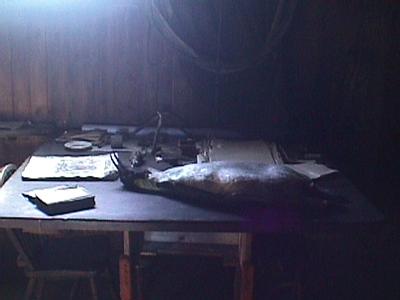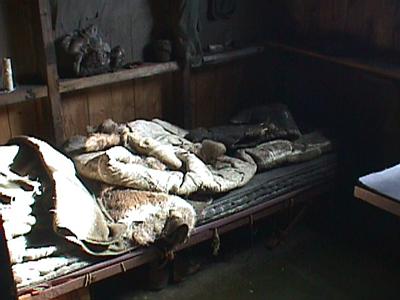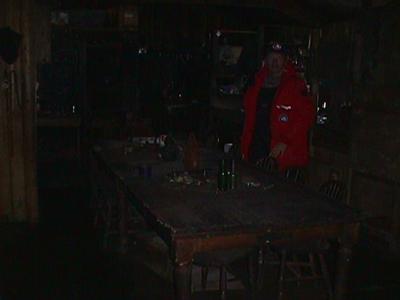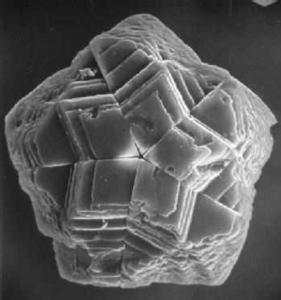
|
|
23 November, 1999
Imagine the abject shock and despair that Robert Falcon Scott and his
companions Edward Wilson, Lawrence Oates, Edgar Evans and Henry Bowers
experienced on January 17, 1912 when they arrived at the South Pole, the
ultimate prize in Antarctic exploration, only to find a Norwegian flag
placed there by Roald Amundsen and his party 33 days earlier. This was
Scott's destiny, to be the first to reach the South Pole. His fellow
explorer, Ernest Shackleton, had almost snatched the prize from him three
years earlier, but came up 97 miles short. Now with the pinnacle of his
career within reach, it was lost and lost, worst of all, to a
non-Englishman. Is there any doubt that in returning from the pole that the
parties' emotions would be at low ebb? The winds and cold of the Antarctic
conspired against Scott as well. All five members of the party died before
they could return to the shelter of the hut at Cape Evans.
Scott, Wilson, Evans, Oates, Bowers. These names read like a list of place
names of Antarctica. Mountains, glaciers and entire coasts are named for
these intrepid explorers. Scott left from Lyttelton, New Zealand in
November, 1910 in the ship Terra Nova. Following a harrowing southern ocean
crossing, he found the ice of the Ross Sea made it impossible to reach Hut
Point, the location of the hut he used on his previous trip to Antarctica.
Instead he landed at Cape Evans, also on Ross Island, located about half way
between Hut Point and Cape Royds, site of Shackleton's hut. At this site the
expedition erected a prefabricated hut to serve as the base camp for his
attempt to be the first to reach the South Pole.
When I visited Scott's hut at Cape Evans you could almost feel the sense of
history and fate. The hut is larger than Shackleton's but is still quite
small (48' by 24') to accommodate 25 men for the winter. Around the hut
there are many remains of Scott's and later expeditions. I often wonder when
a piece of trash crosses the invisible line and becomes a historic artifact.
The extant that the cold, dry conditions preserve things in the Antarctic is
made evident by the remains of a dog, still lashed to his collar, lying
outside the hut. Inside the stable area, there are piles of seal blubber and
sealskins left by previous expeditions. They give off a musty odor, but are
not deteriorated to the extent you might expect of flesh many years old. The
real experience is when you first walk into the main room of the hut. It is
low and dark. Various items such as clothing, sledges, and boots are hanging
from the walls and ceiling. Food stores line the walls. There, in the middle
of the room, is the table the men sat to eat, read and talk. The same table
at which Scott celebrated his last birthday party with his fellow explorers.
The same table that Apsley Cherry-Garrard sat at with his two companions
when they returned from the trip to Cape Crozier, a trip chronicled in the
book "The Worst Journey in the World" by Cherry-Garrard. I can see the photo
of those men in my mind and can almost envision them sitting at the table
with those blank stares. I am very humbled standing in this spot at this
time. I am also feeling very, very fortunate.
If you are unfamiliar with the exploits of Scott, Shackleton, Amundsen,
Douglas Mawson, Richard Byrd and other Antarctic explorers, I encourage you
to find one of the many narratives of their exploits. They make riveting
reading.
Today's featured CRP Team Members are Woody Wise of Florida State University
in Tallahassee and Dave Watkins from The University of Nebraska in Lincoln.
Dave and Woody study calcareous nannofossils, which are the remains of
microorganisms. These fossils are made up of calcium carbonate (limestone)
and are very small, less then 25 microns. These fossils make up the chalk
deposits found around the world including the famed "white cliffs of Dover"
in England. Nannofossils are important to study because they are very common
in some rocks and can be used to determine the time and environment when the
rocks were deposited. Below is a Scanning Electron Microscope (SEM) image of
a type of nannofossil (Braarudosphaera bigelowii) found in the Cape Roberts
Project core.

Scott's Terra Nova Hut at Cape Evans, Ross Island, Antarctica.

The desiccated remains of a sled dog outside Scott's hut.

The desk used by Scott with papers, books and a stuffed penguin lying on it.

Scott's bunk with a seal skin sleeping bag and other skins to keep out the Antarctic cold.

This was the highlight of my experience at the huts of the Heroic Era. Standing next to the table in Scott's Terra Nova Hut at Cape Evens.

Woody Wise (left) and Dave Watkins, the "dwarf" fossil experts on the Cape Roberts Project.

A beautiful nannofossil, Braarudosphaera bigelowii, (Gran & Braarud), 1947.
Contact the TEA in the field at
.
If you cannot connect through your browser, copy the
TEA's e-mail address in the "To:" line of
your favorite e-mail package.
|
